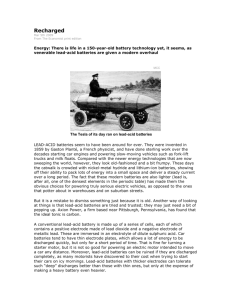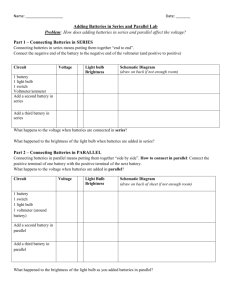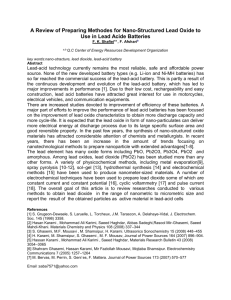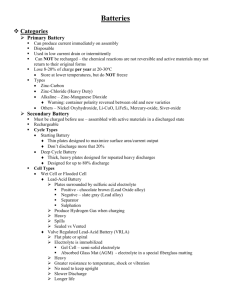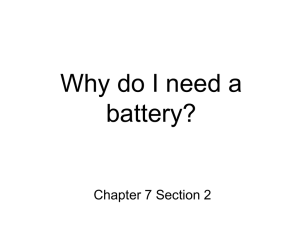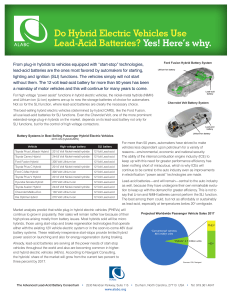HMT-CR-02 - EORM.com
advertisement
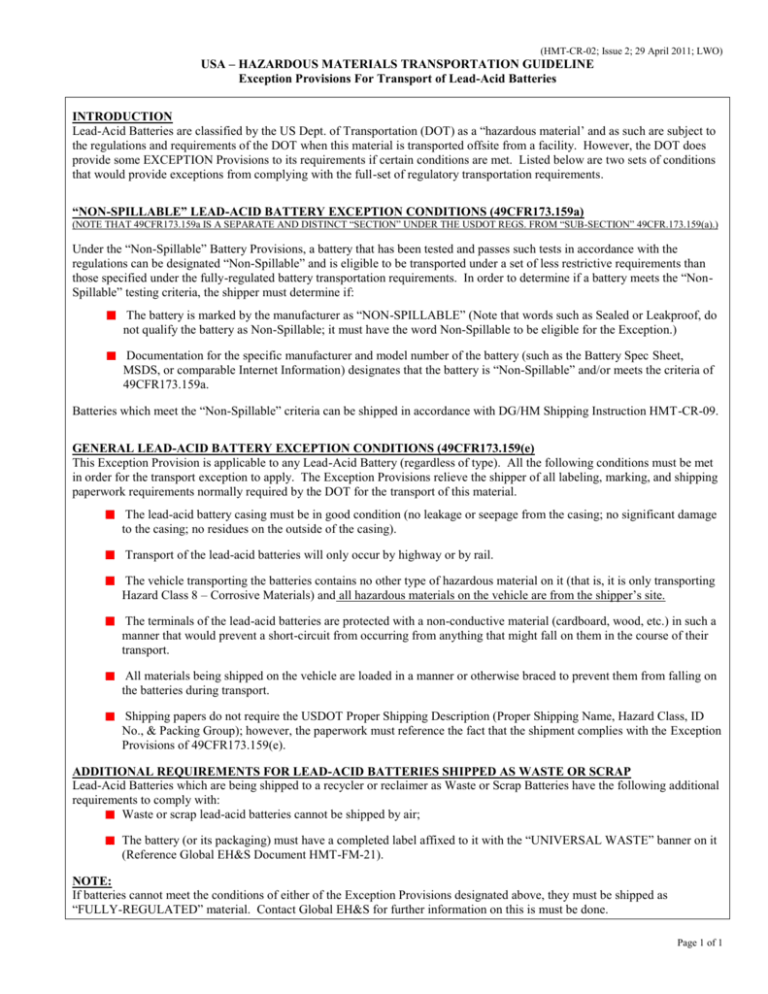
(HMT-CR-02; Issue 2; 29 April 2011; LWO) USA – HAZARDOUS MATERIALS TRANSPORTATION GUIDELINE Exception Provisions For Transport of Lead-Acid Batteries INTRODUCTION Lead-Acid Batteries are classified by the US Dept. of Transportation (DOT) as a “hazardous material’ and as such are subject to the regulations and requirements of the DOT when this material is transported offsite from a facility. However, the DOT does provide some EXCEPTION Provisions to its requirements if certain conditions are met. Listed below are two sets of conditions that would provide exceptions from complying with the full-set of regulatory transportation requirements. “NON-SPILLABLE” LEAD-ACID BATTERY EXCEPTION CONDITIONS (49CFR173.159a) (NOTE THAT 49CFR173.159a IS A SEPARATE AND DISTINCT “SECTION” UNDER THE USDOT REGS. FROM “SUB-SECTION” 49CFR.173.159(a).) Under the “Non-Spillable” Battery Provisions, a battery that has been tested and passes such tests in accordance with the regulations can be designated “Non-Spillable” and is eligible to be transported under a set of less restrictive requirements than those specified under the fully-regulated battery transportation requirements. In order to determine if a battery meets the “NonSpillable” testing criteria, the shipper must determine if: The battery is marked by the manufacturer as “NON-SPILLABLE” (Note that words such as Sealed or Leakproof, do not qualify the battery as Non-Spillable; it must have the word Non-Spillable to be eligible for the Exception.) Documentation for the specific manufacturer and model number of the battery (such as the Battery Spec Sheet, MSDS, or comparable Internet Information) designates that the battery is “Non-Spillable” and/or meets the criteria of 49CFR173.159a. Batteries which meet the “Non-Spillable” criteria can be shipped in accordance with DG/HM Shipping Instruction HMT-CR-09. GENERAL LEAD-ACID BATTERY EXCEPTION CONDITIONS (49CFR173.159(e) This Exception Provision is applicable to any Lead-Acid Battery (regardless of type). All the following conditions must be met in order for the transport exception to apply. The Exception Provisions relieve the shipper of all labeling, marking, and shipping paperwork requirements normally required by the DOT for the transport of this material. The lead-acid battery casing must be in good condition (no leakage or seepage from the casing; no significant damage to the casing; no residues on the outside of the casing). Transport of the lead-acid batteries will only occur by highway or by rail. The vehicle transporting the batteries contains no other type of hazardous material on it (that is, it is only transporting Hazard Class 8 – Corrosive Materials) and all hazardous materials on the vehicle are from the shipper’s site. The terminals of the lead-acid batteries are protected with a non-conductive material (cardboard, wood, etc.) in such a manner that would prevent a short-circuit from occurring from anything that might fall on them in the course of their transport. All materials being shipped on the vehicle are loaded in a manner or otherwise braced to prevent them from falling on the batteries during transport. Shipping papers do not require the USDOT Proper Shipping Description (Proper Shipping Name, Hazard Class, ID No., & Packing Group); however, the paperwork must reference the fact that the shipment complies with the Exception Provisions of 49CFR173.159(e). ADDITIONAL REQUIREMENTS FOR LEAD-ACID BATTERIES SHIPPED AS WASTE OR SCRAP Lead-Acid Batteries which are being shipped to a recycler or reclaimer as Waste or Scrap Batteries have the following additional requirements to comply with: Waste or scrap lead-acid batteries cannot be shipped by air; The battery (or its packaging) must have a completed label affixed to it with the “UNIVERSAL WASTE” banner on it (Reference Global EH&S Document HMT-FM-21). NOTE: If batteries cannot meet the conditions of either of the Exception Provisions designated above, they must be shipped as “FULLY-REGULATED” material. Contact Global EH&S for further information on this is must be done. Page 1 of 1

